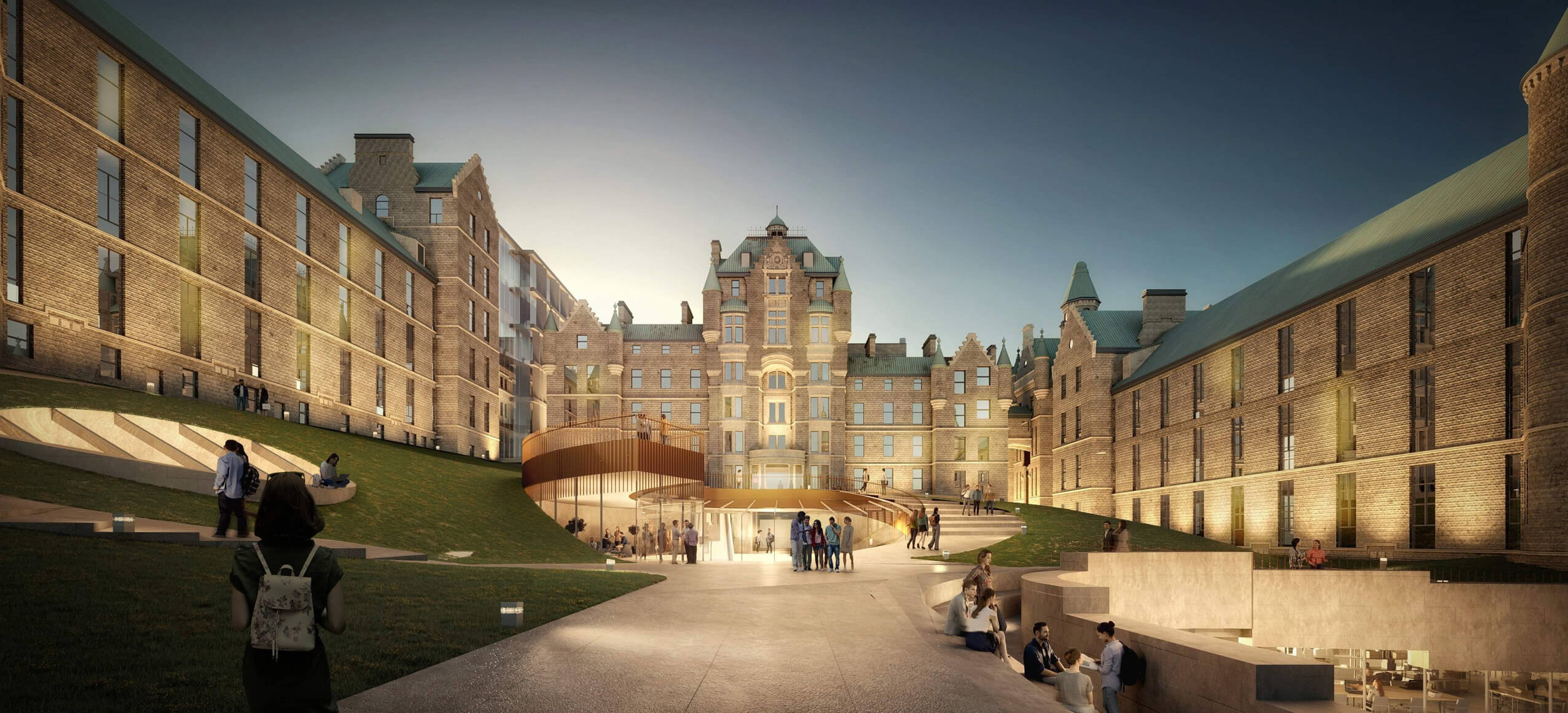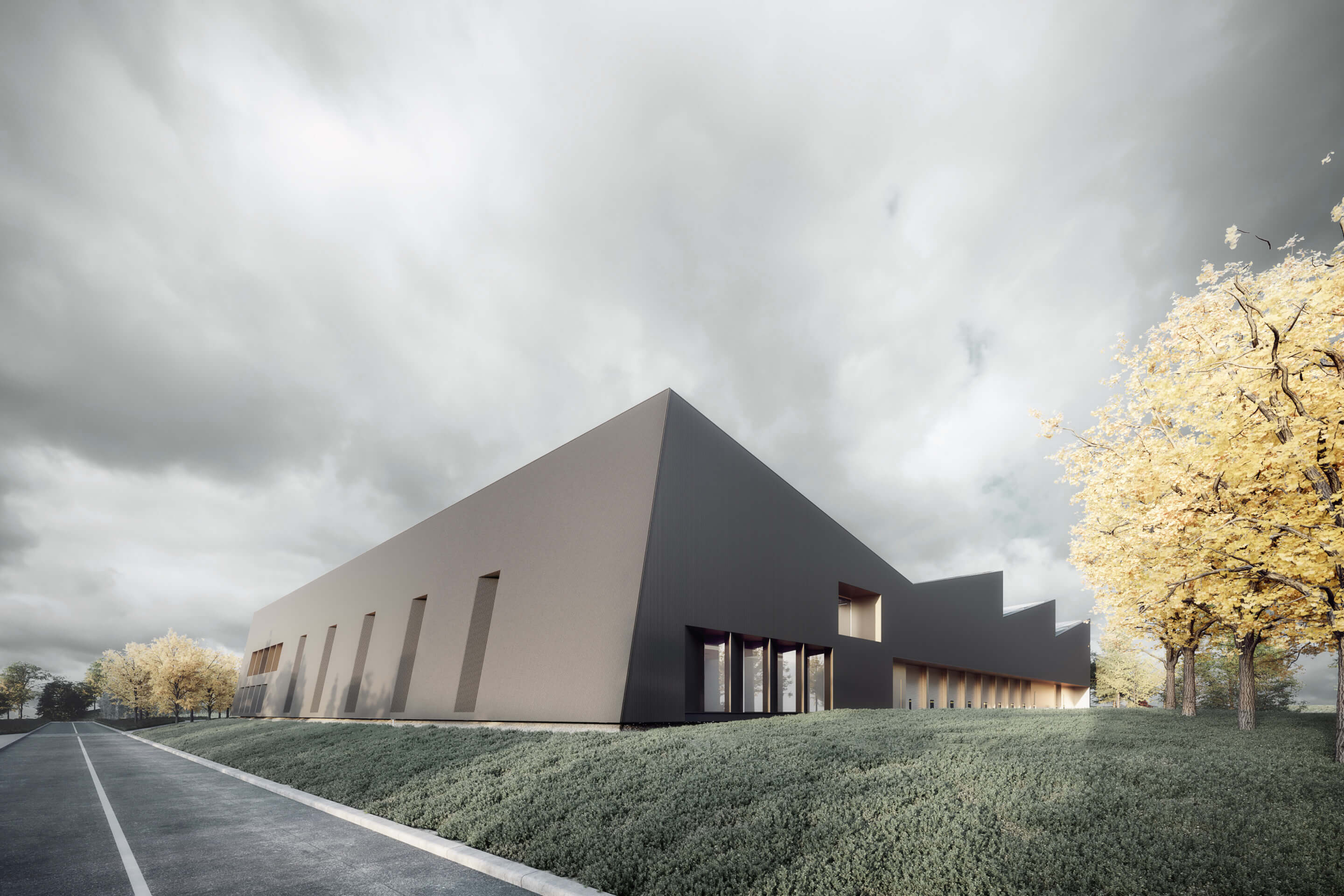Architecture can’t wait for regulators to lead on sustainability
With urgent turning points for mitigating climate change drawing ever nearer, it’s time for the architecture field to take notice—and action. Seventy-five percent of global emissions come from the urban built environment, and in 2020, buildings accounted for 36 percent of global energy demand and nearly 40 percent of energy-related CO2 emissions. However, the building industry has not met the challenge of climate change with the urgency and resolve it warrants, looking to regulators and institutions to set benchmarks for sustainability, when policy often lags behind the changes architects know are necessary to build a climate resilient future. But if we as a field can acknowledge architecture’s power to shape, and heal, our relationships with the built and natural environment, then we must accept a responsibility—and a unique opportunity—to direct that power towards the most pressing challenge of our time.
Rather than waiting for government mandates, architects across all building sectors—residential, commercial, industrial, and institutional—should take the initiative to lead the conversation on sustainable development and fast-track the regulatory process, working in alliance with communities, urban planners, and policymakers to spearhead and encourage the proliferation of resilient and highly sustainable spaces and construction standards. Design can provide the blueprint for policies and regulations that, when scaled up and applied in broader contexts, have the ability to stimulate high-impact sustainability innovations and urgently needed emissions reductions.
In 2018, Diamond Schmitt was selected to design Ādisōke, the new Ottawa Public Library – Library and Archives Canada Joint Facility. The request for proposal outlined ambitions to create a LEED v4 Gold or equivalent certified building design, incorporating advanced building technologies and the application of future-proofing concepts. But as the project progressed, the direction shifted toward a more serious conversation about working to achieve net zero carbon balance. As initial net zero carbon standards typically target office and residential buildings, the firm collaborated with the Canada Green Building Council to model energy requirements and performance opportunities for this unique building type, contributing to the evolution of these standards in the process. Setting a precedent for future large-scale public developments of this kind, where absolute targets are replaced with more nuanced project-specific considerations, the project demonstrates how our role as architects has influence on leadership to push the envelope on building energy guidelines and advance regulatory efforts.

Beyond the usual checklist of energy-saving features that have become commonplace—efficient appliances, LED lights, triple pane windows—there is a wide array of technology and knowledge capable of transforming standard sustainable building practices, including mass timber, passive design standards, energy-generating materials, and other innovations that make net zero buildings possible. But with the industry bar and broad regulator awareness set at a generalized call to reduce emissions, these methods go above and beyond the current minimum standard and are often relegated to projects directly tied to sustainability. If widely embraced and promoted by architects, these practices can not only lay the necessary foundation for an architecture that fulfills a role in healing the planet, but also provide fertile ground for new explorations of form and function to inspire future sustainable designs.
An example of this is Mjøstårnet in Norway, designed by Voll Arkitekter for AB Invest, which was born out of ambitions to illustrate the building capabilities of mass timber. At the beginning of the pilot project, the intention was not to construct the world’s tallest timber structure, but after setting that record, the explorations conducted to reach these heights offer a new perspective on usage possibilities for sustainable materials, particularly in the context of rapid urban mixed-use development.
Manitou a bi Bii daziigae (formerly the Innovation Centre at Red River College, designed by Diamond Schmitt in joint venture with Number TEN Architectural Group) also demonstrates the marriage of aesthetic and environmental innovation with the first Building Integrated Photovoltaic system in North America. Concealing solar cells behind nano-coated glass panels that change color depending on weather and sunlight, the façade visually animates the glass-clad structure while simultaneously transforming the building envelope into an energy generator that can provide more than 75 percent of the building’s energy. This design feature is an outward expression of the path of learning and opportunities for innovation that these technologies can offer, positioning highly sustainable design standards not as an onerous constraint but rather a point of inspiration for future development of architectural ideas.
Additionally, projects like the New Vic at McGill University, a new interdisciplinary center for sustainability research and public policy designed by Diamond Schmitt currently under development, represent a paradigm shift in how both institutions and architects can approach the challenge of sustainability. By making sustainability a pillar of its institutional priorities, curriculum, and campus development, the university has signaled the urgency of the issue and the importance of a holistic approach to tackling climate change—an effort that is reinforced by the center’s architecture.

Diamond Schmitt’s design for the New Vic embodies the institution’s goal of transformative climate action, drawing on principles of adaptive reuse and healing our relationship with the land to reimagine what a cutting-edge, high-tech facility should look like. It considers the environmental and social impacts of buildings and materials throughout their full life cycle, while engaging deeply with the needs of researchers, policymakers, and community partners to create a space that can serve as an inclusive and effective catalyst for progress. Design principles like adaptive reuse represent a seismic shift away from the architecture field’s long-entrenched pressures toward constant expansion, novelty, and top-down process, creating an avenue for designers to advance dialogue with institutions, policymakers, and the public about the regulatory and systemic changes necessary for a truly sustainable future.
Some regulators have demonstrated serious commitment to sustainability and awareness of its feasibility with rigorous, evidence-backed development guidelines. In these cases, design can act as a bolster for policy, with architects lending their expertise in industry-specific methods to realize the vision of policymakers and climate advocates. The City of Toronto set an example in 2017 with the implementation of a Zero Emissions Buildings Framework that sets aggressive goals for emissions reduction by 2030, targeting both new construction and existing building stock. This policy encourages architects to explore sustainability innovations on projects that are frequently excluded from mandates due to technological and logistical complexities that are seen as inherently and insurmountably high-energy-use. The Toronto Paramedic Services Multifunction Station designed by Diamond Schmitt, in association with gh3*, is one new building that counterbalances this assumption and advances the scope of regulatory possibility from the design side; like Ādisōke, it is one of the first buildings of its kind to set a net zero energy goal.

Toronto has continued to demonstrate climate leadership with its first fully Passive House certified social housing, led by Diamond Schmitt, as well as the ambitious Quayside development (designed by Adjaye Associates, Alison Brooks Architects, and Henning Larsen), which will see the city’s prestigious waterfront transformed into Canada’s first all-electric, zero-carbon community of this scale, and home to one of the country’s largest residential mass timber buildings. Projects like these—created in tandem with architects, developers, multiple levels of government, and extensive public engagement—illustrate the potential of collaboration throughout the design process to support and advance regulatory goals, demonstrating that Toronto’s ambitious energy targets are not only realistic, but a critical new paradigm of urban development policy that should be replicated in cities around the world.
To meet the challenge of climate change, architects must take the initiative to establish efficiency and decarbonization as baseline expectations for any project. While firms specializing in sustainable architecture are leading the charge, it is essential for the rest of the field to follow their example, committing to ambitious sustainability targets along every step of the design and construction process regardless of—and in order to drive the conversation on—regulatory requirements. Leading and educating by example, architects have the power and responsibility to demonstrate that transformative climate solutions are within reach.
This concerted action is not only possible, but imperative as the window for mitigating climate change through sustainable development begins to close. Many architects strive for longevity—of their buildings, of their ideas, and of their legacies. Without concerted action to embrace an architecture that truly moves the needle on sustainability, how long will that legacy survive?
Donald Schmitt, CM OAA, FRAIC, AIA, RCA is a Founding Principal at Diamond Schmitt, a global architecture practice with offices in New York, Toronto, Vancouver, and Calgary. As a signatory of the 2030 Challenge, he is committed to advancing sustainable design strategies, including: living biofilter technology, net-zero energy building, maximizing passive house initiatives, pioneering the use of Building Integrated Photovoltaic Panels in North America, and advocating for the widespread use of mass timber.
Diamond Schmitt associate Arne Suraga will lead a panel discussion titled Passive House: High Quality Housing & Environmental Efficiency at Facades+ Toronto on Thursday, July 21. Registration information can be found here.
